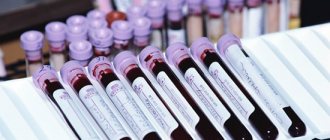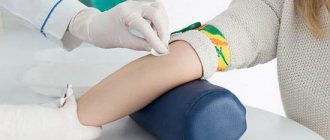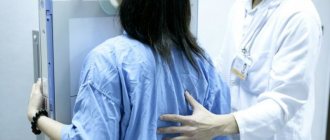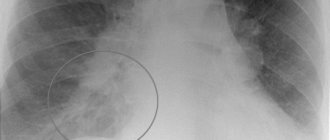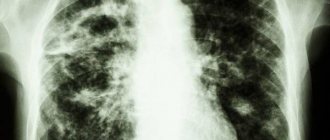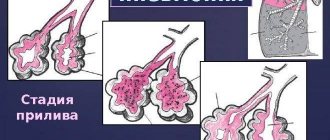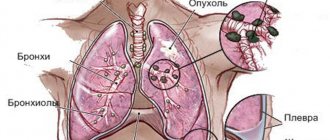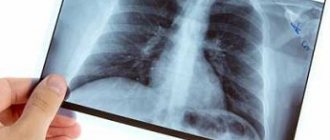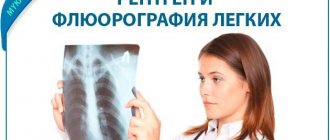Tuberculosis, a dangerous infectious disease that claimed thousands of lives at the beginning of the last century, is no longer such a threat to humanity. You can get infected. Outbreaks of this disease are still often recorded in our country. Preventive measures, namely vaccination, help reduce the incidence of disease. After vaccination, a person, even if infected, will survive the disease more easily. But vaccination alone is not enough. Annual diagnosis is another measure to prevent the spread of infection. Detection of tuberculosis in the early stages helps to begin treatment in a timely manner, thereby eliminating the development of complications and infection of others.
There are several diagnostic methods. For adult patients, the best method is fluorography. In addition to this, experts may recommend an x-ray of the lungs or a bacteriological examination of sputum if there is a cough. But pediatric radiography is prescribed in exceptional cases. For children there is a Mantoux test. Why is that? Parents are interested in the effectiveness of the diagnostic method; it is important for them to understand what is preferable for a minor patient - X-ray or Mantoux. We invite you to learn more about each method.
Mantoux test - advantages and disadvantages
Familiar from childhood, the Mantoux test was first carried out on a large scale in 1975. Now this method of diagnosing tuberculosis is an annual event in children over one year of age.
Some people mistake Mantoux for a vaccine against tuberculosis. This is far from true. It only shows how effectively the body is able to fight the disease and whether the patient needs revaccination.
The described test involves the introduction of tuberculin into the child’s body - a drug obtained by extracting processed tuberculosis bacteria and their metabolic products. The concentration of the active substance is so low that it causes virtually no side effects. However, an immune response is possible. It is by the skin reaction that the presence of tuberculosis and immunity to it is judged.
When tuberculin drugs are administered intradermally, a specific reaction of the body occurs. It can be post-vaccination or infectious. There is nothing to fear from the first type of reaction - after vaccination, the child has developed antibodies, the immune system reacts to a familiar infectious agent. But with the second, the doctor will rush to prescribe an additional examination and, based on its results, treatment. The presence of the disease is indicated by the size of the papule that forms at the injection site. A spot no larger than 4 mm in diameter is considered normal. If this size is exceeded, specialists suspect infection and prescribe tests.
The advantages of the Mantoux test include:
- frequency – once a year;
- no need to visit a clinic - the test will be done at school or kindergarten;
- availability;
- versatility.
However, this diagnostic method has a number of disadvantages, namely:
- dependence of the result on the reactivity of the child’s body: in children prone to allergies, there is a high risk of a false positive response. Weakened immunity also leads to distorted tuberculin test results;
- special rules for administering the drug and behavior after injection: tuberculin is administered strictly intradermally, otherwise distortion of the test results cannot be avoided. After the manipulation, the injection site should not be scratched or rubbed, which is not always possible in children;
- the risk of developing allergies - this usually concerns patients prone to it. In them, the introduction of tuberculin can provoke the appearance of urticaria, and sometimes more serious symptoms, including anaphylactic shock;
- the information content of the sample is less than 50 percent.
Radiography - advantages and disadvantages
X-ray is a procedure that is used as a last resort, especially for minor patients. The fact is that ion irradiation has a negative effect on the developing child’s body, so serious reasons are required to prescribe such a study as radiography. These include:
- the baby has clinical signs of tuberculosis;
- the Mantoux test gave a sharply positive (hyperergic) reaction;
- there is a possibility of infection, confirmed by other examinations.
This method has both advantages and disadvantages.
An undoubted advantage is the accuracy of the result. The image will show the presence of the disease. Besides, x-rays are not as dangerous as they might seem. Today, research is carried out using digital devices, the radiation of which is minimized. During the procedure, all unused parts of the body are covered with a special lead apron.
Of the minuses it is worth noting:
- impossibility of conducting an annual examination (x-ray is a method used to confirm the result of another examination);
- radiation hazard;
- age limit.
X-rays are not recommended for patients under 14 years of age, especially infants, and pregnant women.
However, the doctor may authorize the examination if the child:
- repeated attacks of bronchial asthma;
- there is an immune deficiency;
- It is necessary to test the effectiveness of cystic fibrosis therapy.
A doctor has no right to force a patient to take an x-ray. Parents or other legal representatives make decisions for a minor child.
How to avoid trouble due to refusal of a lung x-ray instead of Mantoux
Often, when parents refuse an X-ray of the lungs instead of Mantoux, doctors take a hostile position and do not allow the child to enter kindergarten or school. In fact, this behavior of medical workers does not comply with Federal law, and parents can defend their rights. It is necessary to start a written dialogue with doctors and the head of the clinic and in the first appeal be sure to indicate the following:
- your full name and what became known about the preliminary decision to prohibit the issuance of a medical certificate for admission to a kindergarten or school;
- emphasize that this is categorically contrary to Federal Law and refer to Art. 32 (consent to medical interventions for a child under 15 years of age is given only by their official representatives), Art. 5, paragraph 1 (the right of citizens to refuse vaccinations and other manipulations as part of the prevention of tuberculosis);
- indicate knowledge of Art. 7, paragraph 3 (any anti-tuberculosis assistance to minors under the age of 14 is provided only with the consent of their official representatives);
- mention the Constitution of the Russian Federation, Article 43 of which states the right to education, including preschool education, regardless of religion or health status.
A written dialogue with representatives of a medical organization should begin only after the child has undergone a general medical examination and received reports on the state of health from an ENT specialist, ophthalmologist, surgeon, orthopedist, and has taken blood, urine, and stool tests for enterobiasis and worm eggs. Supplement these data with a description of the patient’s health status (no hyperthermia, no excessive sweating, weight is within normal limits, appetite is not reduced, and so on).
At the end of the statement, it is worth emphasizing that any departmental documents that contradict Federal Law are illegal and cannot be enforced.
The application is drawn up in 2 copies; if one of them is not accepted at the medical institution, then it is worth sending it by mail with acknowledgment of receipt. The next step, if pressure continues on the parents, is a visit to the prosecutor's office with the previous application (copy) attached.
We recommend reading about how to write a refusal from Mantoux. From the article you will learn about the reasons for refusing Mantoux, how to write a refusal, the consequences, and visiting a TB doctor afterwards. And here is more information about why to visit a TB doctor after Mantoux.
An X-ray instead of Mantoux can be done as part of the detection of tuberculosis, but only if the parents agree to such a study. According to the Federal Law, representatives of minors under 14 years of age may refuse tuberculosis prophylaxis and any tests as part of its diagnosis in the absence of a clear clinical picture of the pathology.
X-ray or Mantoux – which is safer?
Comparison of the Mantoux reaction and radiography is not correct. The tuberculin test is a screening test, the accuracy of the method is not one hundred percent, but it is available to everyone. X-ray is a diagnostic method that will not be used without serious reasons; it is intended to confirm the diagnosis. X-rays are not prescribed instead of Mantoux.
If we compare these methods in terms of safety, then an allergy test is, of course, safer than radiography. That is why it is performed annually for children. X-rays can have a negative effect on the body, so you should only agree to have one if there are serious indications.
The question of what is more harmful - Mantoux or X-rays - for a child is relevant for most parents. In any case, a specialist will help you make a decision. If we are talking about the possibility of contracting a tuberculosis infection, it is better to follow the advice of a doctor.
Diaskintest for tuberculosis
Diaskintest is one of the newest tests, which consists of subcutaneous injection of protein antigens of mycobacteria for further assessment of the result of contact of the human body with the causative agent of the disease. The test is considered positive in the presence of compactions and hyperemia.
The test accuracy is 95%. This is a good replacement for the tuberculin reaction, since Diaskintest practically does not cause complications.
The composition of the drug for administration includes:
- protein extract of mycobacteria;
- phenol;
- sodium chloride;
- sodium phosphate;
- sorbents;
- water for injections.
This test does not require any special preparation. The product can be injected into both hands, in the area of the middle third of the forearm. Phthisiatricians recommend performing Diaskintest on the limb that is less active. This will significantly reduce the risk of mechanical damage around the injection site. The doctor also warns parents that this area should not be combed or various creams and ointments applied to it. These actions can lead to the development of incorrect reactions and possible complications.
The drug is administered using a special tuberculin syringe, which has a thin needle. The test can be performed annually on children aged 7 to 16 years.
You should also adhere to the following rules:
- if there is a negative reaction, re-use of Diaskintest is possible no earlier than after 3 months;
- after the introduction of vaccinations, this sample can be used 30 days later;
- Colds, as well as other diseases with the presence of inflammatory processes, postpone the use of the test for a month.
When observing a child in a tuberculosis clinic, control tests must be carried out every 3-6 months. This is necessary to assess the dynamics of treatment and adjust the course of using medications.
The result of Diaskintest is determined by an experienced doctor three days after the injection.
This diagnostic method may have the following reactions:
SENSATION! Follow the link:
Is there any disability for pulmonary tuberculosis?
- Negative. This result is considered normal. In this case, the only visible signs are a needle mark or slight hyperemia, the size of which does not exceed 1 mm, or a colorless papule less than 6 mm in diameter.
- Doubtful. In this case, there is redness on the skin around the injection site without any compaction. This result is a reason to refer the child to a tuberculosis clinic for additional diagnostic methods.
- Positive. In this case, a large papule is observed, indicating contact of the child’s body with mycobacterium tuberculosis. After receiving this result, you should immediately consult with a phthisiatrician who can choose the most effective course of therapy aimed at eliminating the disease and preventing complications.
The price of the drug for Diaskintest ranges from 1000 to 2000 rubles.
Some parents cannot afford this, so the choice of anti-tuberculosis diagnostic method is towards the free Mantoux test. The test has certain contraindications, in the presence of which the doctor may recommend other methods of examining the body for the presence of mycobacteria.
These include:
- acute infectious diseases;
- chronic pathologies in the acute stage;
- skin diseases;
- allergy to the components of the drug.
Before performing Diaskintest, you should consult an experienced doctor about the advisability of using this diagnostic method. This will help make the child’s anti-tuberculosis examination comfortable and safe for his health.
Summing up - what to choose
It is better to prefer the Mantoux reaction, because doing it is not so dangerous. If there are doubts about the reliability of the result, the doctor will suggest an alternative method of examining the child.
Are there other methods for diagnosing tuberculosis?
Mantoux and X-ray are not the only ways to diagnose tuberculosis. Other methods include:
- blood test for the presence of specific antibodies, an increased amount of which indicates illness;
- ELISA (enzyme-linked immunosorbent assay) – detection of the disease at the initial stage when the pathogen enters the bloodstream;
- Diaskintest is a method similar to the Mantoux test, but it only reacts to active Mycobacterium tuberculosis;
- IRHA (indirect hemagglutination reaction) is one of the types of blood tests;
- quantiferon test - taking blood from a vein to identify latent or active forms of the disease;
- PCR – analysis of human biomaterial for the presence of Koch's tuberculosis bacillus.
These methods are alternative and are used when the Mantoux test is not resolved due to contraindications.
Adults do not have to choose: Mantoux or fluorography. The second method is much more accurate; false positive results are excluded. However, in childhood you need to be extremely careful and agree to an x-ray only if it is really necessary.
X-ray examination instead of the Mantoux reaction
With individual intolerance to tuberculin, the child’s temperature rises significantly and the functioning of the gastrointestinal tract is disrupted. In such cases, the doctor may give a referral for another study, for example, replacing Mantoux with an X-ray, followed by consultation with a phthisiatrician. However, such an examination is not prescribed for a preventive examination, without clinical manifestations confirming the need for it. The reasons for an x-ray may be the following:
- repeated attacks of bronchial asthma;
- immune deficiency;
- chest pain;
- heavy sweating, especially at night;
- positive Mantoux reaction.
In children and adolescents, the initial stage of tuberculosis infection occurs with damage to the intrathoracic lymph nodes - the X-ray image shows the contours of this primary tuberculosis focus.
Parents should understand that this study will not lead to radiation sickness; in the absence of alternative methods, children are prescribed x-rays instead of Mantoux, even in infancy
If it is necessary to take an x-ray in the chest area, it is important to cover other parts of the child’s body with a special apron and provide protection from the harmful effects of x-rays. And after the procedure, increase your consumption of seafood, fresh juices with pulp, raw vegetables and fruits
